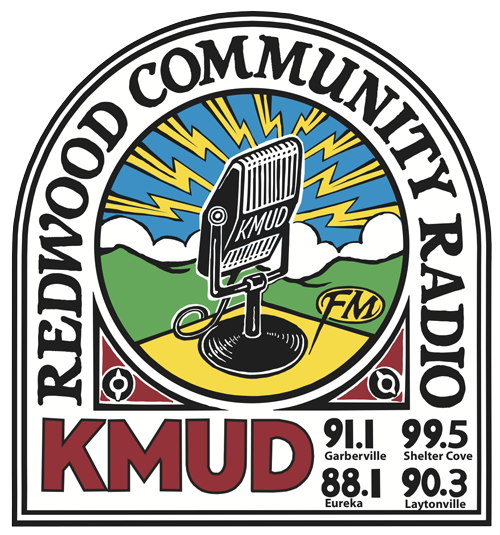Equanimity, Finding Shared Humanity Through the Art of Mediation by: Javi Rodriguez

We may have just witnessed a generational event that will go into the history books, with the assassination of Charlie Kirk.
Putting aside agreement or disagreement with his views, it could be argued that he lived his life with the resolve and courage to engage in verbal debate, as a practice of conflict resolution. He is quoted as saying, “We record all of it (campus debates) so that we put [it] on the internet so people can see these ideas collide. When people stop talking, that’s when you get violence. That’s when civil war happens, because you start to think the other side is so evil, and they lose their humanity.”
What’s your dispute resolution system, because we all may need to be equipped in this new world? In the face of conflict and tension, how can we contribute to peace on the planet? What are the practical skills needed to be the peace we want to see in the world?
Redwood Community Radio offers to its Board of Directors, staff, and volunteers, services in Mediation, Listening Session, and Grievance Panel. In this blog we’ll explore the opportunity that judgement presents us with, to find shared humanity and be that peace we’d like to see.
Conflict is an inescapable reality of human life. Whether in our personal relationships, workplaces, communities, or nations, difference in needs, values, and perspectives ensures that tension will arise. The common misconception is that peace is achieved by eradicating conflict. Remove the problem-person or persons and the problem will be solved, right? When in fact harmony is cultivated through learning how to move through conflict skillfully. To embody the peace one wishes to see in the world, one must learn not only the tools of mediation but also the inner art of equanimity.
Ever heard of a Buddhist going to war for any reason? From an Eastern perspective, the Buddhist middle path provides a guiding framework. It teaches that balance—rather than indulgence or denial—leads to clarity and liberation. In conflict resolution, this translates into neither suppressing disagreement nor inflaming it, but meeting it with steadiness and presence. Have a disagreement? How will you bring it forward without inflaming the situation more?
Equanimity, a central quality in Buddhist cultivation, is the capacity to remain calm and even-minded amidst life’s turbulence. It is not indifference, nor passivity, but an active steadiness that refuses to be swayed by aversion or attachment. After all, someone needs to maintain an emotional center when tensions arise.
Aversion can be displayed by avoiding the conflict. Where attachment can mean winning the conflict at all costs, even human life. With equanimity, one is empowered to remain centered and balanced, with the courage to engage, yet not fixated on an outcome.
This lens stands in contrast to the dominant Western pop cultural mindset, where conflict is often framed through the binary of hero and villain. Stories frequently cast one party as right and the other as wrong, worthy and unworthy, victor and loser. While this narrative is compelling for drama, it hinders the work of true mediation, and serves to perpetuate conflict. Real human conflict is rarely so simple. All humans have needs, histories, and dignity. To impose a hero-villain framework is to oversimplify, deepen the divide, and create conditions of oppositional experience. To be the peace, one must engage conflict with a mindset to discover a shared experience, as this is where disputes may begin to be put to rest.
Equanimity offers a path toward shared experience. At its root is nonjudgment, not in the sense of abandoning discernment, but of refusing to reduce others to caricatures of good or evil, right or wrong. Nonjudgment allows mediators and participants alike to liberate themselves from hero and villain, and to see more clearly. When judgment is suspended, possibilities for mutual understanding emerge – shared humanity. Imagine the skill to hear an insult as one’s communication of an unmet need. Marshall Rosenberg of NVC (Nonviolent Communication) calls this a literacy of feelings and needs, where one begins to hear not only the content of another’s words, but the human needs beneath them. This opens the door to empathy and creative problem-solving, with collaborative energy.
In practical mediation, drawing from this Eastern framework can enrich the process. A mediator who embodies equanimity can serve as a stabilizing presence in the room, helping parties to slow down, breathe, and see beyond their reactive stories. Additionally, mindfulness practices can be woven into conflict resolution settings, supporting participants to observe their emotions without the judgment so as to not be consumed by them. Even brief pauses for reflection can shift the atmosphere from adversarial to collaborative. We must realize that these skills are learned and need practice.
The invitation, then, is to explore how equanimity can become not only a personal practice but also a skill-set integrated into the modern art of mediation. Just as one learns techniques of active listening, reframing, or consensus-building, one can learn to anchor in equanimity: cultivating awareness, suspending judgment, and choosing the middle path amidst extremes. In doing so, we may move closer to a culture where conflict is not feared or dramatized, but welcomed as a teacher. Imagine viewing conflict as a shared experience presenting an opportunity to learn about oneself and world around.
Ultimately, conflict resolution rooted in equanimity is more than a technique—it is a way of being. It calls us to embody the peace we wish to see, not by erasing tension, or eradication of perceived villains, but by meeting it with clarity, steadiness, and compassion. Through this practice, the constructs of hero and villain dissolve, and in their place, shared humanity can emerge.
By Javi Rodriguez
Listen to his show Qi Talks every third Thursday @ 9 am
Javier can be reached roamfitwjavi@gmail.com
